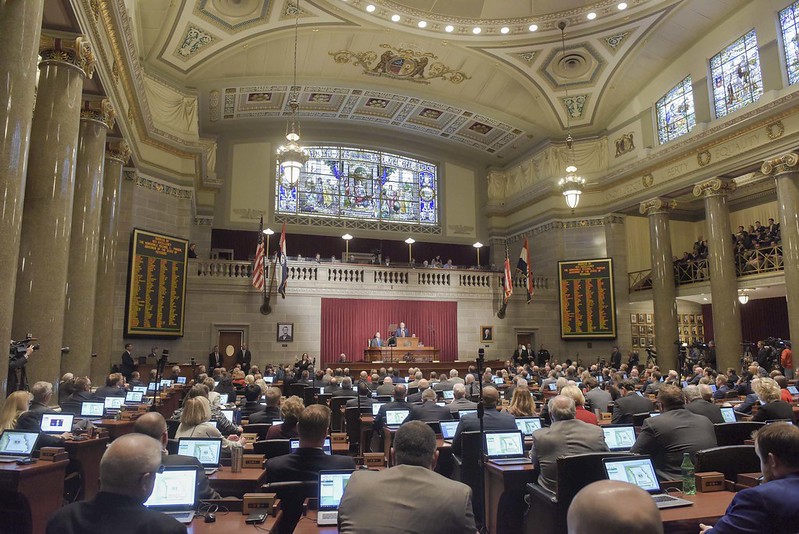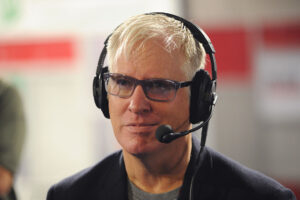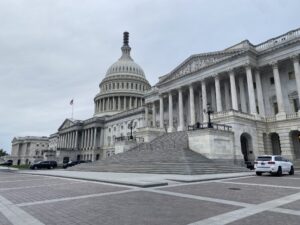I sat down to write this on the 20th anniversary of Gov. Mel Carnahan’s tragic plane crash.
Much has changed for me since then, but far more has changed in Missouri politics.
Twenty years ago, I’d just come off my first real campaign gig, a failed effort to elect Missouri native Bill Bradley to the presidency. The Rhodes Scholar’s political career had, in its own way, illuminated the parochialism of Missouri Democratic politics.
In 1975, while passing through St. Louis en route to see his parents in the Jefferson County river town of Crystal City, the future NBA Hall of Famer asked party elders about their ‘76 ticket and potentially wide-open U.S. Senate and gubernatorial nominations.
Well, you’re an impressive young fella, they replied. Would ya ever be interested in state treasurer?
The liberal reformer got the message, moved to New Jersey and won a U.S. Senate seat the next cycle.
Credentialed as Bradley was, the party’s dance card was full, teeming with good ‘ol boys quite unlike the era’s leading Republicans: Two urbane, Ivy League-educated reformers named Jack Danforth and Kit Bond. Both wealthy heirs, these Rockefeller Republicans positioned themselves left of their 1972 Democratic opponents.
Today, Josh Hawley might dub them “cosmopolitan elites.”
While the national Democratic Party moved sharply left in the 1970s and 80s, it was a languid drift in Missouri.
The state Senate’s old bulls – pro-gun, pro-life, stalwarts like Bates County prosecutor Harold Caskey, Pettis County appraiser Jim Mathewson and Shannon County truck driver Danny Staples – would dominate the chamber for decades. Their constituents coalesced with urban Democrats to provide durable legislative Democratic majorities, with Republican strength concentrated in southwest Missouri and suburban St. Louis.
During the 90s, Republicans picked up legislative seats and drew within striking distance of majorities. In 1992, voters limited legislators to eight years per chamber and didn’t grandfather anyone in, so incumbents’ days were numbered.
Weeks after the 2000 election, a young conservative firebrand named Rod Jetton boarded the freshman tour bus and presented a 100-page memo to House Minority Leader Catherine Hanaway. It was a plan to retake the majority. The combative ex-Marine urged Hanaway to hammer away at wedge issues like guns and abortion to attract conservative rural Democratic voters who had long supported known quantities like Caskey, Matthewson, and Staples, but in the new era of term limits and an increasingly liberal national Democratic party, wouldn’t trust some faceless Democrat to defend their traditional cultural mores.
The strategy worked. During the 2001-2002 cycle, nearly everything from Bill Bradley’s Jefferson County down south to the Bootheel trended Republican, and Republicans seized control of both chambers after around 50 years in the wilderness.
Urban liberals like me didn’t help the party’s brand in rural/exurban areas like Jefferson and Ste. Genevieve Counties. I’m ashamed to say that when I joined a primary to succeed Congressman Dick Gephardt, I essentially ignored those counties, which comprised nearly one-third of the district (In a 10-way race, our vote goal was 25 percent). Nothing reinforced my strategy – or my ill fit for the district’s southern third – more than getting a gun pointed at me while canvassing JeffCo after I stupidly peered around a side yard upon hearing noise out back.
The aughts culminated in a Democratic debacle, further depleting Democratic strength outside the two major metros as Roy Blunt crushed Robin Carnahan 54 percent to 41 percent.
Democrats bounced back a bit in 2012, holding onto select SEMO counties with strong labor traditions thanks in part to Todd Akin’s implosion. But this period’s gubernatorial races highlighted rural Democratic hemorrhaging; whereas moderate Jay Nixon won 66 of 114 counties in 2008, that number shrunk to 43 in 2012.
In 2016, Hillary Clinton’s toxicity in Missouri intensified this trend. With her leading the ticket, center-right gubernatorial nominee Chris Koster – despite NRA and Farm Bureau endorsements – won just four counties. Trump took Iron County, one of the few rural counties Obama won in 2008, by a lopsided 75 percent to 22 percent, one of the most dramatic 2008-2016 shifts of any county in America.
But to paraphrase Newton, most political actions have an equal and opposite reaction.
So it has been in Missouri politics. As Republicans’ deft deployment of hot-button issues helped them dominate ancestrally Democratic northeast and southeast Missouri, the party’s center of gravity shifted right. Old-guard moderates – Danforths and Bonds; Dempseys and Pearces – can’t win primaries anymore. And increasingly, in rare parts of Missouri where they can (i.e., middle-ring suburbs), they can’t win generals.
As Democrats lost rural Missouri and moderate Republicans lose the suburbs – speeded by the exodus of Trump-repelled women – the ideological middle continues to evaporate, since the most moderate legislators represented areas where their party’s brand is now tarnished.
The parties’ positions on cultural issues embody this polarization.
On 2016’s SJR 39, which would have allowed business owners to deny wedding services to same-sex couples, three Republican House members went against the grain and voted with Democrats in committee to kill the bill. But by January all three may be out of the legislature, with the last of them, Senator Majority Leader Caleb Rowden locked in the fight of his life in his left-trending, college-town district. The passage of 2019’s HB126, which banned abortions after the first trimester without exception for rape or incest, is also being used against several St. Louis County Republican incumbents in unexpectedly tough races.
In a mirror image of Republican polarization, state Democratic committee delegates adopted 2018 platform language welcoming “all Missourians who may hold different positions” on abortion. Six weeks later, amid a fierce outcry from pro-choice activists, they removed the language – against the wishes of Sen. Claire McCaskill, who always understood that in order to win, she’d need votes from some who consider themselves pro-life.
Missouri’s polarization is stark not just ideologically, but geographically.
Republicans have effectively isolated Democrats to Missouri’s east and west “coasts” without a single Senate seat outside the St. Louis and Kansas City metros, and no non-major metro House seats besides two in Columbia and one in Springfield. Our legislative map resembles the famously divided national county-unit map with blue along the coasts and a massive swath of red in between, interrupted only by a few tiny blue dots.
The white-hot energy of today’s left, which helped a grassroots activist topple the Clay dynasty and imperils both an incumbent Congresswoman and state senator in previously safe west St. Louis County, is a response not just to President Trump’s antics, but also to the sense that Missouri Republicans have embraced him. That doesn’t mean Biden will win Missouri – he won’t. But it does mean that entire swaths of suburbia, including most of St. Louis County, may be lost to Missouri Republicans for the foreseeable future.
Missouri politics has changed as much as nearly any other state’s over recent decades.
At the federal level, a bellwether has become reliably red. At the state level, leadership by mostly moderate rural Democrats has given way to conservative Republican control. In many respects, the two parties have traded places, as former Republican bastions like Kirkwood go Democratic, while former Democratic strongholds like Little Dixie, Ste. Genevieve and the Bootheel give Donald Trump huge margins.
The irony is that our politics have changed dramatically precisely because our demographics have changed so little. With Latinos at just 4 percent and Asians at 2 percent, Missouri is 22 percentage points whiter than the nation (82 percent vs. 60 percent). Missouri’s relatively stagnant population suggests that Democrats must do more than just win over south and west St. Louis County to neutralize Republicans’ advantage in statewide races. They must either persuade more rural ex-Democrats to come home, or spark meaningful population growth in the major metro areas.
Neither will be easy.
Our stories may be republished online or in print under Creative Commons license CC BY-NC-ND 4.0. We ask that you edit only for style or to shorten, provide proper attribution and link to our website. AP and Getty images may not be republished. Please see our republishing guidelines for use of any other photos and graphics.






Jeff Smith